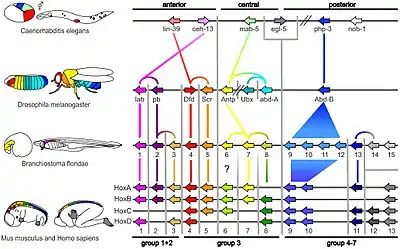Portal:Evolutionary biology
Introduction
Selected article - The structure of the DNA double helix (type B-DNA). The atoms in the structure are colour-coded by element and the detailed structures of two base pairs are shown in the bottom right. General images -The following are images from various evolutionary biology-related articles on Wikipedia.
Selected picture - The Golden Toad was last seen on May 15, 1989. Decline in amphibian populations is ongoing worldwide. The Golden Toad was last seen on May 15, 1989. Decline in amphibian populations is ongoing worldwide. Did you know... -
CategoriesCategory puzzle Select [►] to view subcategories
Evolutionary biology Subfields of evolutionary biology History of evolutionary biology Evolutionary biologists Evolution-related lists Evolutionary biology literature Evolutionary biology terminology Assistance Evolutionary biology concepts Darwinism Digital organisms Evolution of the biosphere Extended evolutionary synthesis Hybridisation (biology) Last common ancestors Modern synthesis (20th century) Molecular evolution Non-Darwinian evolution Organisms by adaptation Origin of life Paleontology Evolution by phenotype Population genetics Evolutionary biology societies Evolution by taxon Transitional fossils Vestigial organs Related portalsRelated subjectsTopics in biologyTasks you can do
Related topicsWikiProjectsWikiProjects connected with biology:
A complete list of scientific WikiProjects can be found here. See also Wikispecies, a Wikimedia project dedicated to classification of biological species. Associated WikimediaDiscover Wikipedia using portals
|









_nyererei_male.jpg.webp)



.jpg.webp)









_1_by_N._A._Naseer.jpg.webp)

![Image 26A covalent adduct between the metabolite of benzo[a]pyrene, the major mutagen in tobacco smoke, and DNA (from Mutation)](../I/Benzopyrene_DNA_adduct_1JDG.png.webp)


.jpg.webp)



